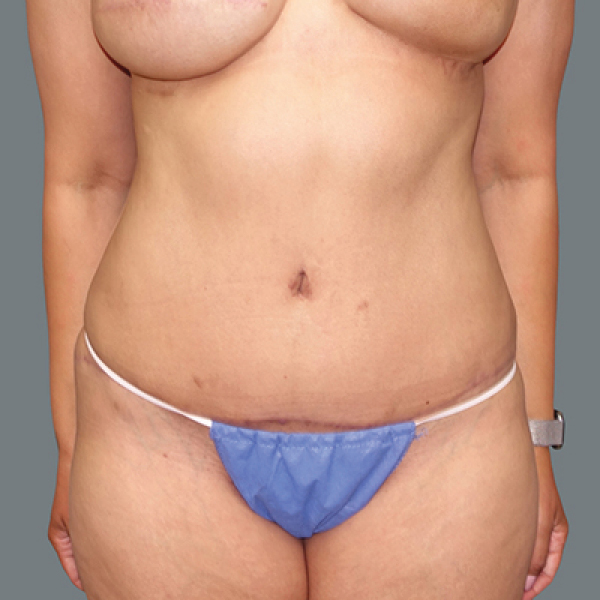An abdominoplasty (or tummy tuck) is a dramatic contouring surgery that removes excess, sagging, skin and fat, and also tightens the abdominal musculature to create a more defined abdomen. For some woman and men, despite best efforts to exercise and maintain a healthy lifestyle, they may still have excess abdominal fat and skin. Pregnancy, massive weight gain and loss, changes in skin elasticity from aging and hormone changes, as well as our own genetics can all greatly influence abdominal contour. It can be common for the abdominal muscles to stretch, creating a loose contour/bulge that cannot be improved with exercise. In addition, it can make exercise less comfortable because of the lack of mid-line support, as well as, create a sense of fullness with each meal. The goals of focused abdominal contouring surgery are to tighten the abdomen to help restore a more contoured and healthy appearance. An abdominoplasty can truly be transforming for both the appearance of your abdomen, as well as, from a functional point of view. This can make clothes feel and look better, and make daily life, as well as, exercise more comfortable and enjoyable.
BODY PROCEDURES, VANCOUVER
Abdominoplasty
Abdominoplasty
Abdominoplasty Considerations
Optimizing your lifestyle is important before considering abdominal contouring surgery. Having a balance of a healthy, nutritious diet, together with a consistent, sustainable exercise program is key to this process. As well, smoking should be stopped before considering surgery, as this can greatly increase risks around the procedure. These lifestyle commitments help to ease the recovery period and ensure that you have beautiful long-lasting results.
Good candidates for a tummy tuck are individuals who:
- Are concerned by a protruding abdomen or excess, sagging, abdominal skin
- Are healthy and maintain a stable weight, with BMI < 32
- Are not planning on future pregnancies
- Have realistic expectations of what can be achieved with surgery
What To Expect During Surgery And Recovery
Abdominoplasty surgery is performed at a hospital or private surgical facility. In general, an incision from hip to hip is made across the lower abdomen. The length of the incision is influenced by the degree of excess tissue present. The placement of the incision will be placed as low as possible so that it concealed under underwear/bikini bottoms. The abdominal skin and fat are then separated from your abdominal wall up to the level of the ribs (abdominal flap). The abdominal muscles are then tightened with stitches. The abdominal flap is then pulled downward and the excess skin is re-draped to allow removal of the lower abdominal excess or redundant tissue. Progressive tension sutures (or internal sutures) will be placed between the abdominal skin/fat and the abdominal wall which will decrease the risk of fluid collections and also help create natural curves and definition. The belly button will be relocated through the abdominal flap to a new position.
There is an option to stay overnight at the medical facility, which is advisable if abdominoplasty is combined with another procedure, such as a breast surgery. In general, most patients recover well over the first 4 week, and we provide you with all the medication and supplies to help you through this process. For the first few days, you will not be able to stand up straight, as the skin will initially feel very tight. It is not uncommon for patients to feel some back discomfort. This sensation will improve with time as the skin loosens. When thinking about time off work, or away from social commitments, 4-6 weeks is usually a safe window of down time, depending on the type of work. During the recovery time, you will wear an abdominal binder/compression garment under your clothes to help minimize swelling and provide support to your abdomen. Heavy lifting and strenuous exercise should be avoided for 4 weeks to prevent strain on the abdominal wall. There are often drains used in the first week to help minimize the chance of fluid accumulating. These are removed in the office and appropriate drain care instructions are provided. The final results can appear gradually over the first few months. The incisions continue to fade over the first year. Scar care such as silicone gel/tape and massage should be performed until 6 weeks.

